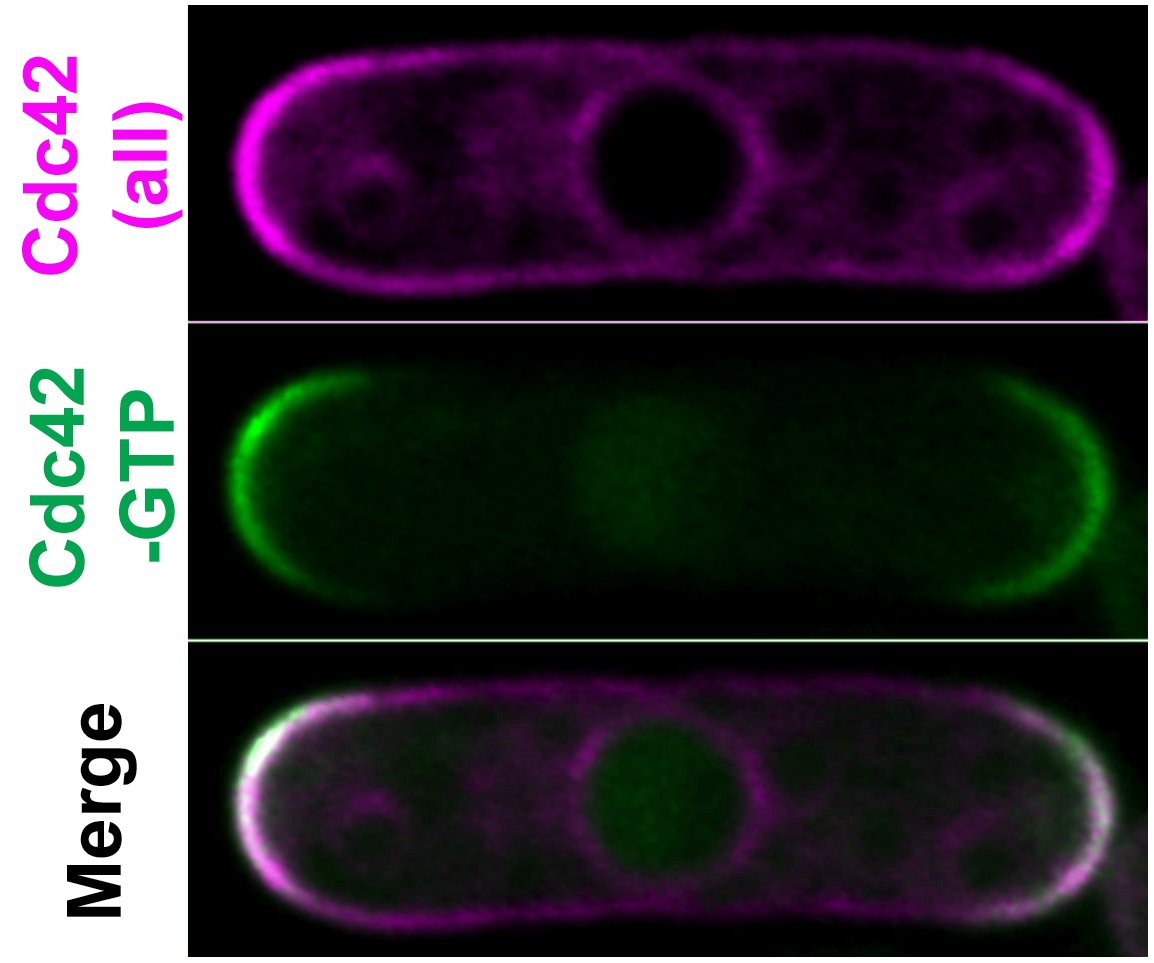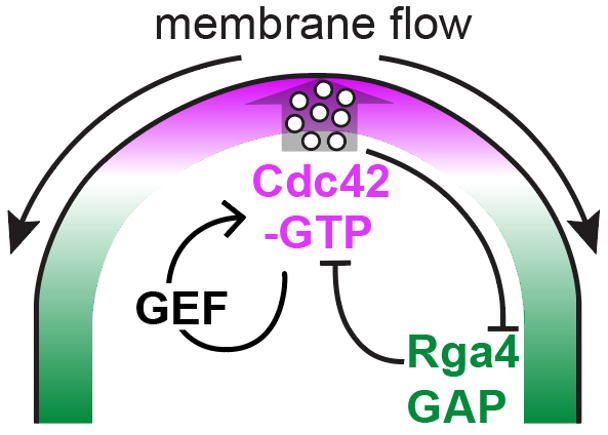Principles of cell polarization
The simple genetic make-up and stereotypical shape of fission yeast cells has allowed a relatively simple dissection of the principles of cell polarization. Cells typically polarize in response to an internal or external signal. However, even in absence of a cue, cells are able to break symmetry and establish an axis of polarized growth. Positive and negative feedbacks around the small GTPase Cdc42, a member of the widely conserved family of small Rho GTPases, are central for this process.

The Cdc42 GTPase – a central organizer of cell polarization
Small GTPases of the Rho family play essential roles in eukaryotic cell polarization. These signaling molecules act as switches, being active in GTP-bound and inactive in GDP-bound forms. In fission yeast, the Rho-family GTPase Cdc42 is active at cell poles where it promotes polarized cell growth. How the cell defines the location of Cdc42 activation and the size of the Cdc42-active zones to achieve the rod shape are some of the questions we are aiming to address.
Positive feedback plays an important role in the control of Cdc42 GTPase. Using optogenetic strategies, we could show that Cdc42 activity is under positive feedback control, where Cdc42-GTP recruits its own activator (the guanine nucleotide exchange factor GEF Scd1) through the formation of a complex with a scaffold protein Scd2. These factors all accumulate at cell poles, as well as the active form of the small GTPase Ras1, which plays an important role in activating the Cdc42 GEF. In mitotic cells, the sites of Cdc42 GTPase activation are largely defined by microtubules, which align along the length of the cell. During sexual reproduction, Cdc42 responds to pheromone gradients.

Cell patterning by membrane flows
Our optogenetic tool led us to the serendipitous discovery of bulk membrane flows from sites of polarized secretion. Membrane flows pattern the localization of membrane-associated proteins, dragging those with longer membrane residence time away from zones of polarized secretion, resulting in local depletion. Because the flows pattern the localization of negative regulators of Cdc42 (the GTPase-activating protein Rga4), they constitute a negative feedback system for morphogenesis: flows caused by local secretion remove the Cdc42 GAP to create a zone permissive for Cdc42 activity, itself driving local secretion, and delimited by its GAP. Local depletion by membrane flows is likely to be generally valid in any cell displaying polarized secretion.
 Positive feedback regulation through recruitment of an activator and depletion of a negative regulator by membrane flows reinforce the formation of zones of Cdc42 activity
Positive feedback regulation through recruitment of an activator and depletion of a negative regulator by membrane flows reinforce the formation of zones of Cdc42 activity
